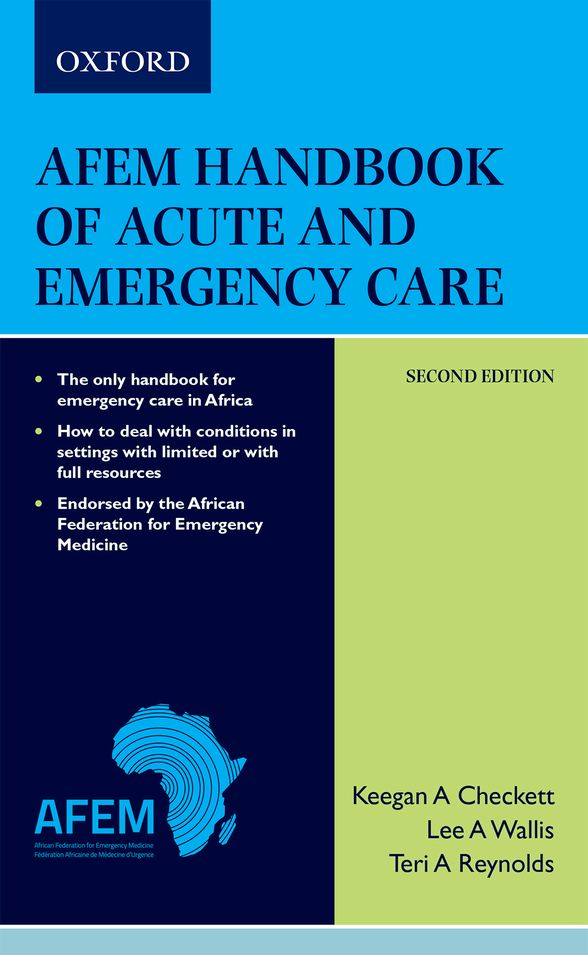
-
R 829.95
- ADD TO CART ({{state.cart.quantity}})
- IN STOCK
- Download Catalogue

The AFEM Handbook of Acute and Emergency Care guides the reader through the approach to the patient in a low resource setting (e.g. basic medications and interventions, with a goal to stabilisation and transfer), a moderately resourced setting (e.g. where an x-ray machine and oxygen are available), or a setting with full resources (e.g. with a CT scanner and NIPPV). This unique stratified approach is tailored to the specificities of the African context. This second edition presents updated clinical management recommendations, an expanded section on unstable patients, a new section on palliative care, and several of the new emergency care outputs from WHO.

The specification in this catalogue, including without limitation price, format, extent, number of illustrations, and month of publication, was as accurate as possible at the time the catalogue was compiled. Due to contractual restrictions, we reserve the right not to supply certain territories.